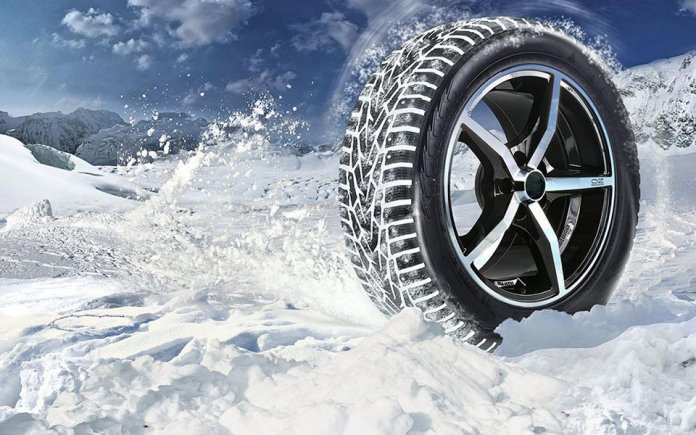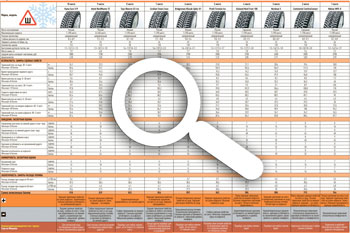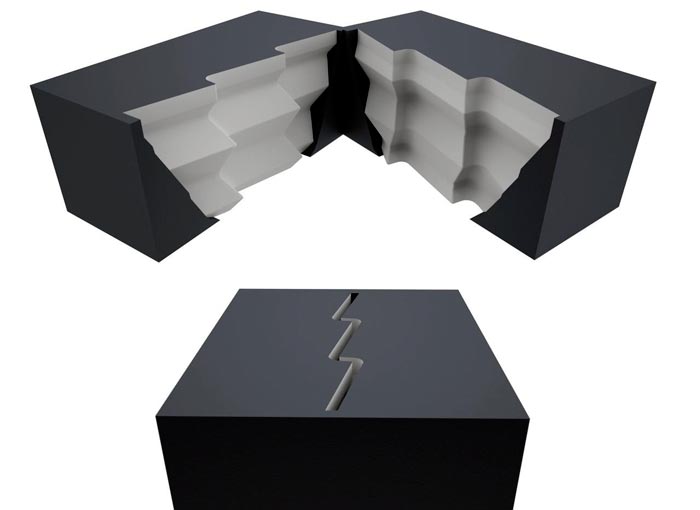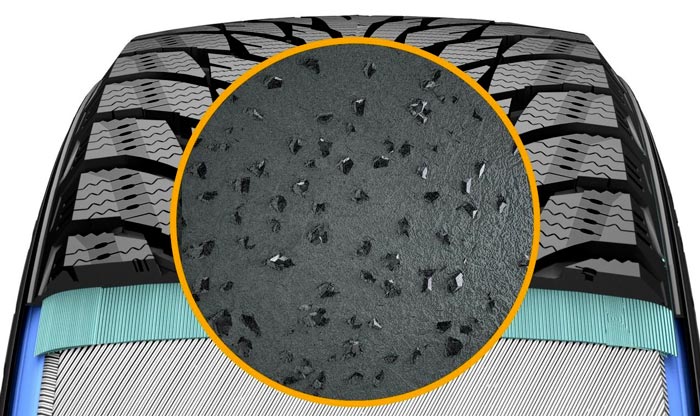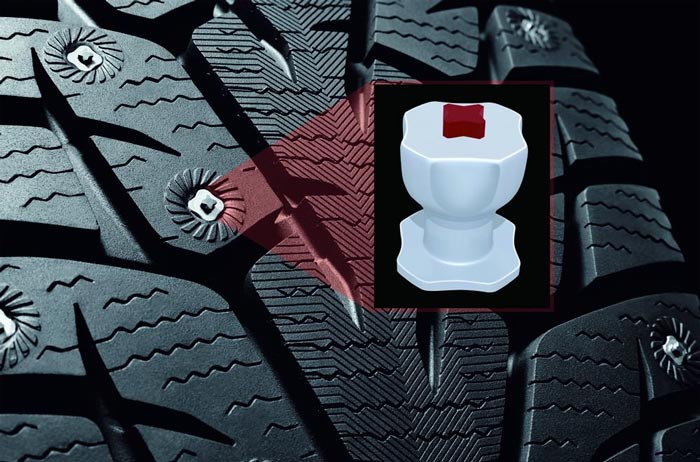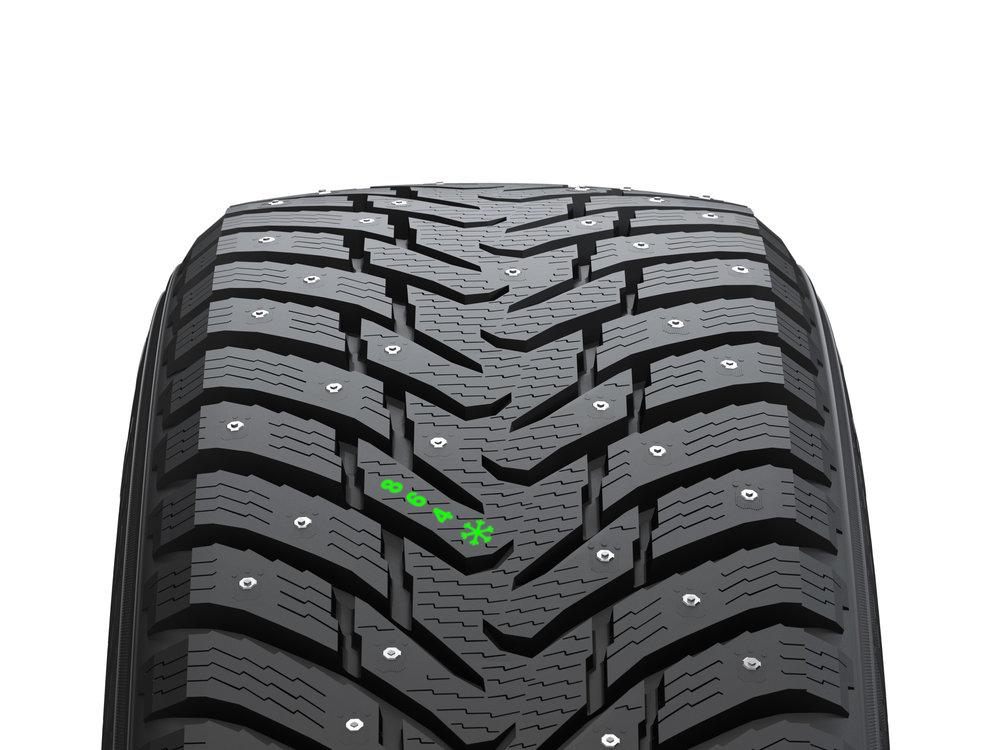In the world car tire market, winter tires account for a modest 7-8%. And in Russia, the production of tires for the winter period is a profitable business, they account for up to 60% of the market. For our country, winter tires of the Scandinavian type with a massive tread, which push snow and ice crust well, are suitable.
In order to choose the most best winter tires 2015, 2016, tests of 4 leading foreign and domestic automotive publications were studied:
- Tuulilasi
- TestWorld
- "AutoReview"
- "Behind the wheel".
Based on the results of all tests, a rating was compiled for winter studded tires 2015-2016. It presents Russian and imported winter tires, an overview of Scandinavian type models.
We also recommend exploring battery testto meet winter fully equipped.
In addition, compiled rating of winter studded tires 2016-2017 winter season.
Winter tires rating for the season 2015-2016
10. Michelin X-IceNorth 3
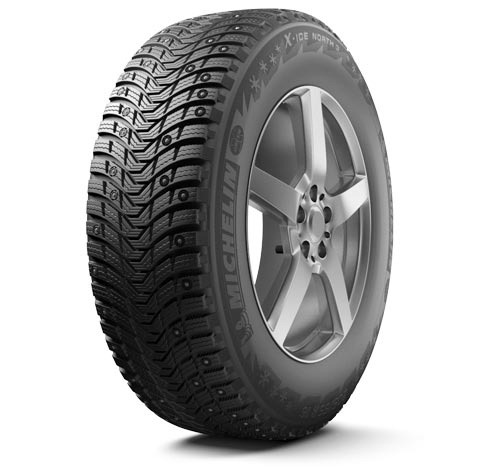 Optimization of the snow clearance is due to the more open tread pattern. The tires hold the road well even in poor grip conditions.
Optimization of the snow clearance is due to the more open tread pattern. The tires hold the road well even in poor grip conditions.
Pros: these are quiet tires that accelerate without problems and hold grip on a snowy road, driving confidently through slush. They have the shortest braking distance of 100 km / h on dry asphalt.
Minuses: acceleration and braking on ice is mediocre. Worst lap time during a test. Michelin X-IceNorth 3 rubber test has shown its suitability for areas where there is little snow and ice.
9. Formula Ice
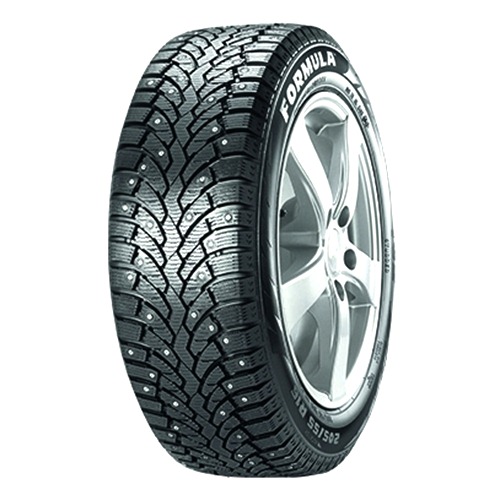 The Formula Ice-clad car handles well on dry pavement, and the aluminum hex stud helps to grip and brake well on snow and ice.
The Formula Ice-clad car handles well on dry pavement, and the aluminum hex stud helps to grip and brake well on snow and ice.
Pros: the tires have excellent braking performance on dry asphalt and have shown a high smooth running.
Minuses: failure during ice and snow tests. Suitable as a budget option for a metropolis, with rare trips out of town.
8. Hankook Winter i * Pike RS W419
 Low-noise Korean-made rubber with 180 studs (depends on size) and high-density siping system to reduce braking distance.
Low-noise Korean-made rubber with 180 studs (depends on size) and high-density siping system to reduce braking distance.
Pros: the best time in turns on an icy track, the test pilots had no complaints about tires while driving the car on a slope in the snow, on a circular track and forest tracks. They behave confidently on a muddy track, on a dry and wet road surface.
Minuses: the behavior is somewhat uneven on the snow.
7. Gislaved Nord * Frost 100
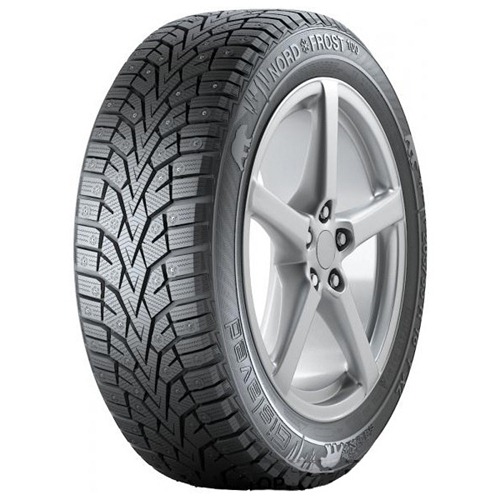 The tires are equipped with studs with optimized head geometry (edges in all directions). This helps a firm grip on ice surfaces. Wide contact patch with a lot of hooks.
The tires are equipped with studs with optimized head geometry (edges in all directions). This helps a firm grip on ice surfaces. Wide contact patch with a lot of hooks.
Pros: the rubber has successfully passed the snow and ice test, has earned good marks on wet surfaces (overall rating - 8.3 according to Test World).
Minuses: high rolling resistance and long braking distances on dry asphalt surfaces.
6. Goodyear UltraGripIce Arctic
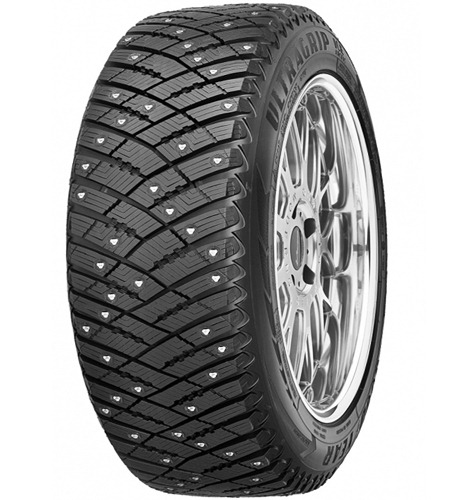 The grooves of this rubber have V-shaped slots. Their purpose is to provide confident grip on snow-covered areas.
The grooves of this rubber have V-shaped slots. Their purpose is to provide confident grip on snow-covered areas.
Pros: This model passed the Tuulilasi and TestWorld tests on ice and snow with dignity, and did not disgrace itself on wet asphalt and water-snowy "mess" (overall rating - 8.4 according to Test World).
Disadvantages: in emergency situations on dry asphalt they react more slowly than other models considered.
five.Nokian nordman 4
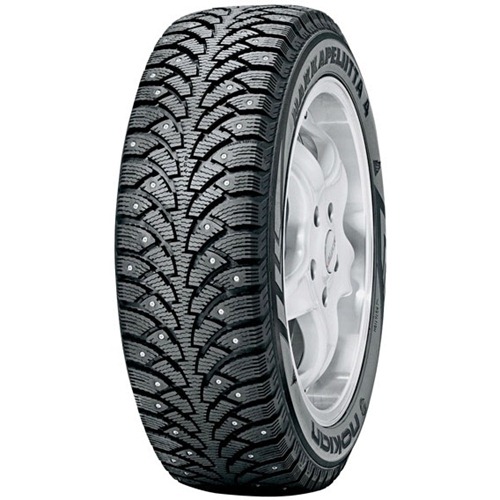 Under the spikes of the tires there are elastic pads that soften contact with the road, reduce noise and extend the life of the spikes.
Under the spikes of the tires there are elastic pads that soften contact with the road, reduce noise and extend the life of the spikes.
Pros: Russian test teams of the past years rated the Nokian Nordman 4 as a "strong average".
Minuses: the Test World team did not like how the tires performed on wet asphalt, and most of all on ice. They gave the subjects an overall rating of 7.1, only the studded Sunny SN3860 (5.9) were worse.
4. Nokian Nordman 5
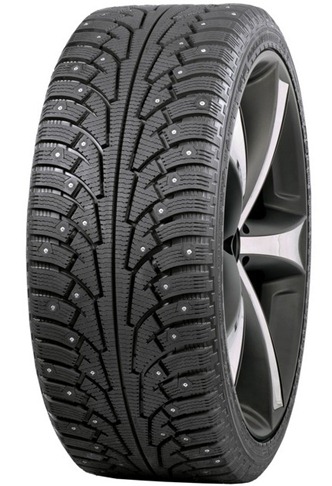 To further improve grip, a projection ("bear claw") is made on the tread block, which creates tension in it. When braking, the cleat is held upright.
To further improve grip, a projection ("bear claw") is made on the tread block, which creates tension in it. When braking, the cleat is held upright.
Of the pros: "Behind the wheel" praised the tire for its low price (from 1930 rubles), average fuel consumption, good stability on snow, lateral grip on ice, and the way the car moved on asphalt.
Minuses: mediocre handling and comfort, satisfactory cross-country ability on snow.
3. Pirelli Winter Ice Zero
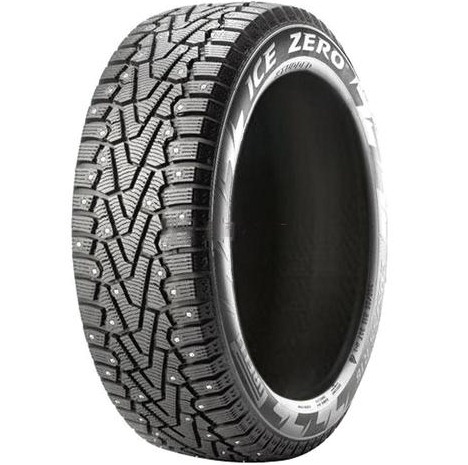 Pirelli products are tested only in harsh weather, as they have to "work" on uneven, icy and snowy surfaces.
Pirelli products are tested only in harsh weather, as they have to "work" on uneven, icy and snowy surfaces.
Positive reviews: about acceleration, braking and handling on snow and ice. You can brake quickly on the asphalt with melted snow.
Disadvantages: loss of grip in corners, loud noise from tires, not short enough for an excellent braking distance on a surface without water.
2. Continental ContiIceContact
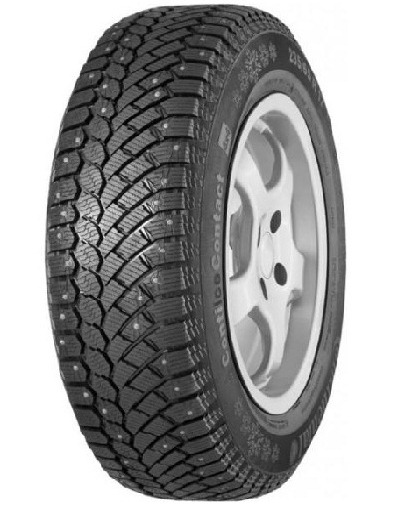 In the manufacture of tires, a special composition of the mixture is used, taking into account the especially cold winter climate. The ContiIceContact is an all-rounder suitable for both "cars" and off-road vehicles.
In the manufacture of tires, a special composition of the mixture is used, taking into account the especially cold winter climate. The ContiIceContact is an all-rounder suitable for both "cars" and off-road vehicles.
Positive sides: quick braking on ice, no complaints about handling, on a snowy road and a dry roadway, you can quickly accelerate and brake.
Minuses: not reference slushplaning resistance.
1. Nokian Hakkapeliitta 8
Having passed the rigorous 2015-2016 winter studded tire test, this set of tires has earned unanimous approval from both Russian and Finnish test teams. Motorists can choose any radius of this tire: R13, R14, R15, R16, R17, R18, R19 and R20.
Benefits: a huge number of studs (190 for 205/55 R16). The addition of special additives to the rubber made it possible to reduce the weight of the tire. No handling problems on the track with melted snow, on frozen and snowy surfaces. Short braking distances on wet and dry asphalt surfaces.
Disadvantages: noise.
Winter tire test method
 Tuulilasi tested 8 studded models for acceleration and braking in snow and ice conditions. Also, rides were made on wet and dry asphalt, and tests were carried out for slashplaning resistance (slipping of the car's wheels on a mash of water and snow).
Tuulilasi tested 8 studded models for acceleration and braking in snow and ice conditions. Also, rides were made on wet and dry asphalt, and tests were carried out for slashplaning resistance (slipping of the car's wheels on a mash of water and snow).
 The magazine "Behind the wheel" studied 10 sets of winter tires most demanded by consumers (175/65 R14) at a price not exceeding 3700 rubles per piece. The main thing for the experts of the edition was the price-quality ratio.
The magazine "Behind the wheel" studied 10 sets of winter tires most demanded by consumers (175/65 R14) at a price not exceeding 3700 rubles per piece. The main thing for the experts of the edition was the price-quality ratio.
 "AutoReview" With the help of the Mercedes-Benz S-class, I found out how they "behave" on the road: winter tires - "Scandinavians" with studs, non-studded "auto shoes" for severe winters of the Scandinavian type and non-studded tires of the European type. The most important acceleration and deceleration took place in a huge hangar. At the start, an anti-slip system was used, during braking - an anti-lock braking system, and on a winding track, controllability was supported by a dynamic stabilization system.
"AutoReview" With the help of the Mercedes-Benz S-class, I found out how they "behave" on the road: winter tires - "Scandinavians" with studs, non-studded "auto shoes" for severe winters of the Scandinavian type and non-studded tires of the European type. The most important acceleration and deceleration took place in a huge hangar. At the start, an anti-slip system was used, during braking - an anti-lock braking system, and on a winding track, controllability was supported by a dynamic stabilization system.
 Test World Team held winter tire test 2015 in the open air and indoors. In the beginning, the time for which the car would travel the circle was recorded. Quality tires (25 sets were tested) were required to provide fast acceleration, high lateral grip and short braking distances. Test pilots then gave good and bad impressions of each model. Additionally, reviews were collected on how cars with different tires maintain a given direction of travel.
Test World Team held winter tire test 2015 in the open air and indoors. In the beginning, the time for which the car would travel the circle was recorded. Quality tires (25 sets were tested) were required to provide fast acceleration, high lateral grip and short braking distances. Test pilots then gave good and bad impressions of each model. Additionally, reviews were collected on how cars with different tires maintain a given direction of travel.

